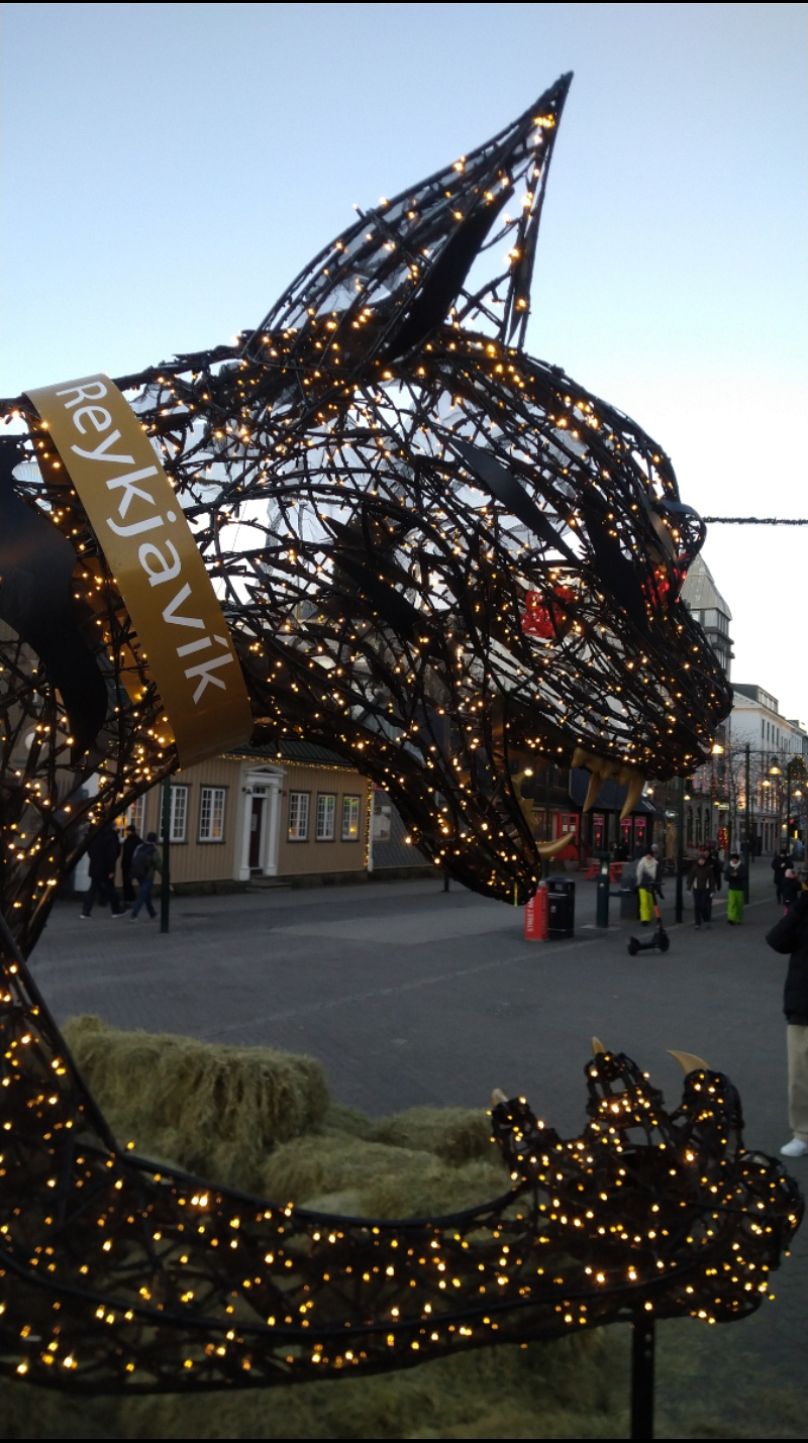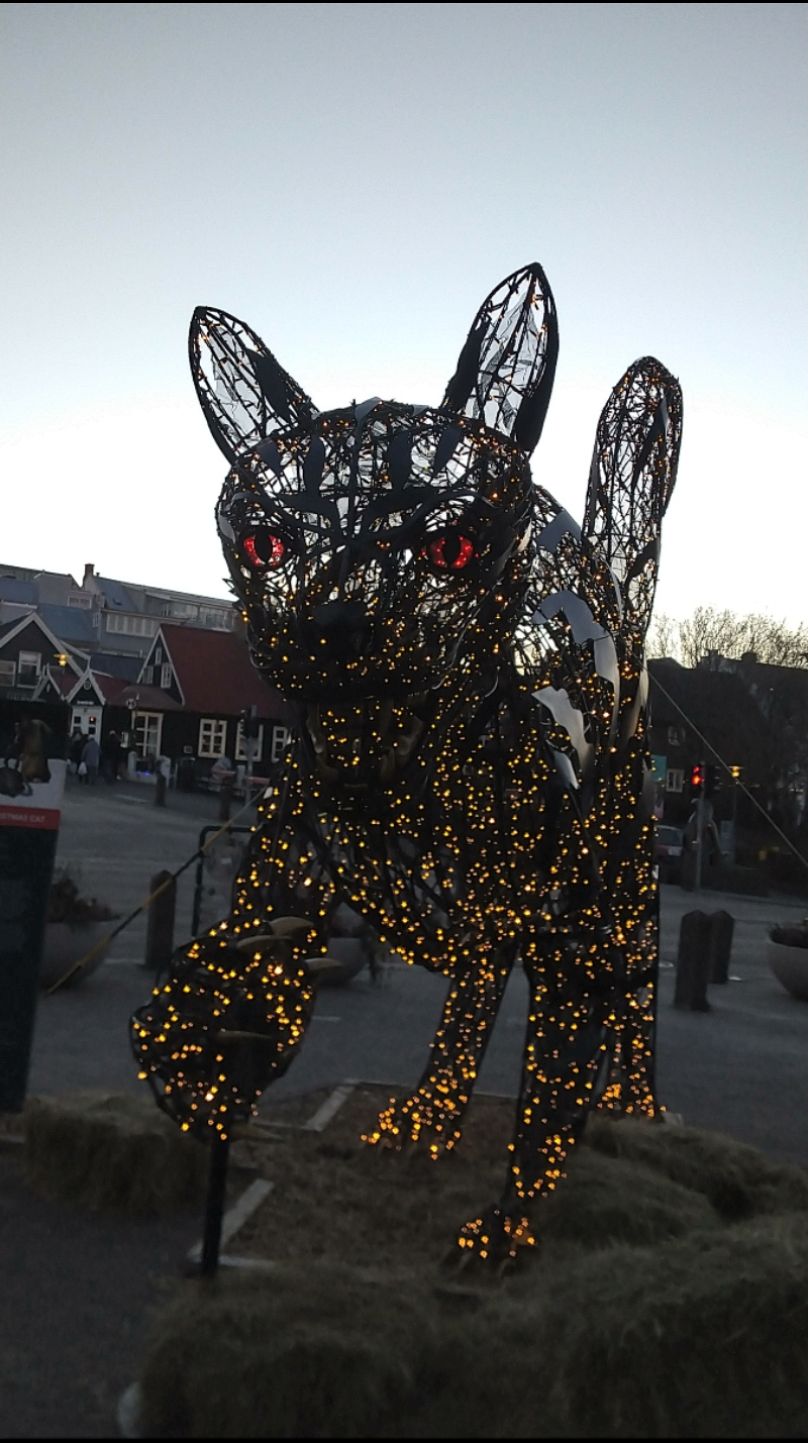While you’re overindulging in the festive cheer and the rampant commercial takeover of these holidays, keep this Icelandic folklore in mind... Or Christmas might be far from puuuurrrfect...
Last year, I had the pleasure of heading to Iceland for the European Film Awards, which were held in Reykjavík - a city I had on my must-see list for as long as I can remember.
I was blown away by the trip – not just because of the sights, the hospitality, the stunning aurora borealis, getting to see Björk live, or getting to interview Iceland Prime Minister Katrín Jakobsdóttir, but because I got to come back with a new way of traumatising my nephew.
You see, while you may have heard of the Grinch, Krampus or le Père Fouettard - all anti-Santa figures that punish naughty kids (essentially, the dastardly, child beating Yins to Santa’s benevolent, present giving Yang) - you may not be aware of the giant, child-chomping Yule Cat, Jólakötturinn.
I certainly wasn’t.
I first came face to face with Jólakötturinn in downtown Reykjavík, at the delightful Lækjartorg square.
Now, I’ve always loved cats, purely because the fluffy agents of chaos have long been a multifaceted symbolic shorthand in the arts, especially one representing mystery, luck (good and bad), and even amoral behaviour in film. From Blofeld’s cat in the Bond films to Marlon Brando’s kitty in The Godfather, Inspector Gadget and Danger Mouse’s nemeses, Church in Pet Sematary and MVP Salem in Sabrina The Teenage Witch, cats have always fascinated us.
That and considering that the ancient Egyptians associated them with the goddess Isis, I’ve long harboured the conspiracy theory that if one were to dig long and deep enough, the world would realise that the pyramids are actually triangular cat ears peeking out of the sand. Nothing has been proven, but I remain hopeful.
But I digress.
The illuminated cat sculpture in Reykjavík is stunning, and after some research into Icelandic folklore, has quite the lore.
As the story goes, the giant kitty eats children who don’t get new clothes for Christmas.
It dates back to 1932, when Jóhannes úr Kötlum, an Icelandic poet, wrote about the Yule Cat in his book, 'Jólin koma' ('Christmas is Coming').
His poem describes a large puss with glowing eyes that roams the countryside, going from house to house looking for children to consume, should the scamps not be wearing the new clothes they got for Christmas. To avoid this fate, kids should do their chores in order to be deemed good enough to get new clothes – even if it is a modest pair of new socks – in order to remain amongst the living. Oh, and they should be thankful for the gifts they receive.
Over time, this story extended to adults as well as children, as a morality tale that states that we should all help each other in the spirit of the season, and help those less fortunate with small but vital gestures. In order to avoid a moggie orchestrated massacre, obviously.
Not a bad message, all in all.
Even if those glowing eyes are like staring into the Godless abyss, where darkness reigns and envelops you.
Trust me, I’ve tried. I stayed gripped for a solid meowment in front of Jólakötturinn, and it showed me things. Deep, dark, beautiful things.
So, while you’re overindulging in the festive cheer and the rampant commercial takeover of these holidays, be worthy and grateful for your gifts, and don’t forget those who don’t get the luxuries you might be taking for granted.
Or Jólakötturinn will go all Hannibal Lickter on your insubordinate Yuletide arses and make Christmas far from puuuurrrfect.
You've been warned.













